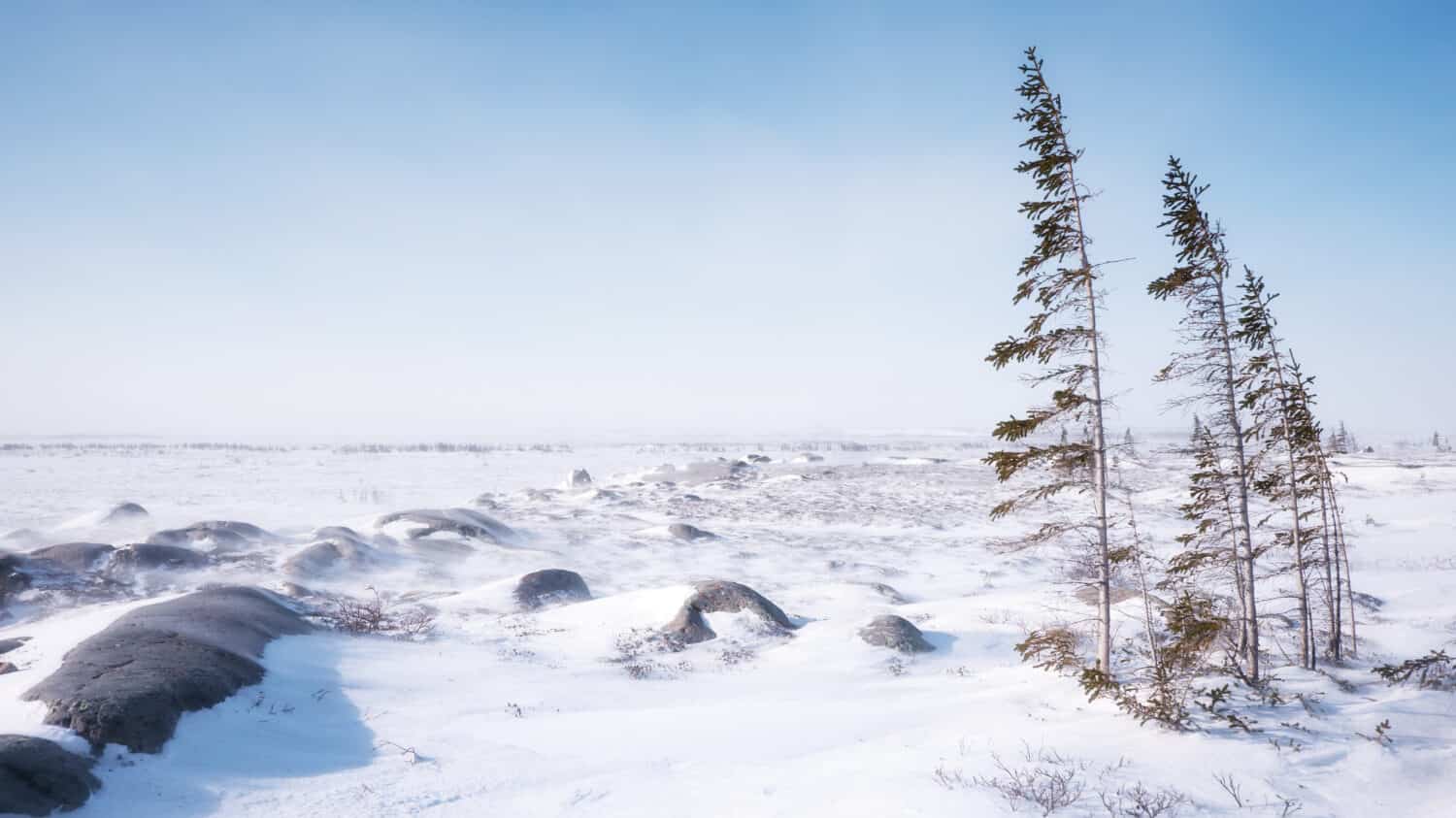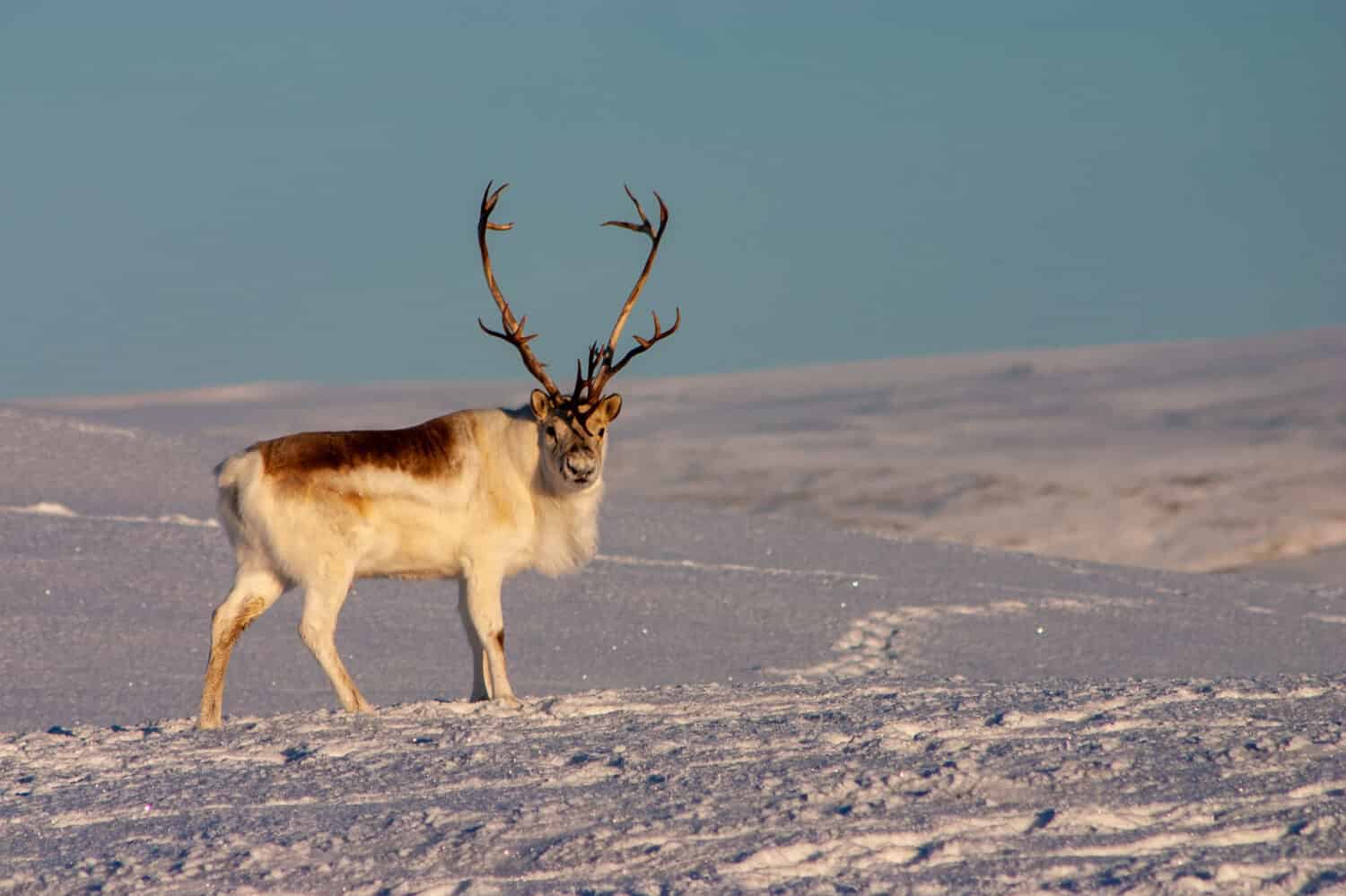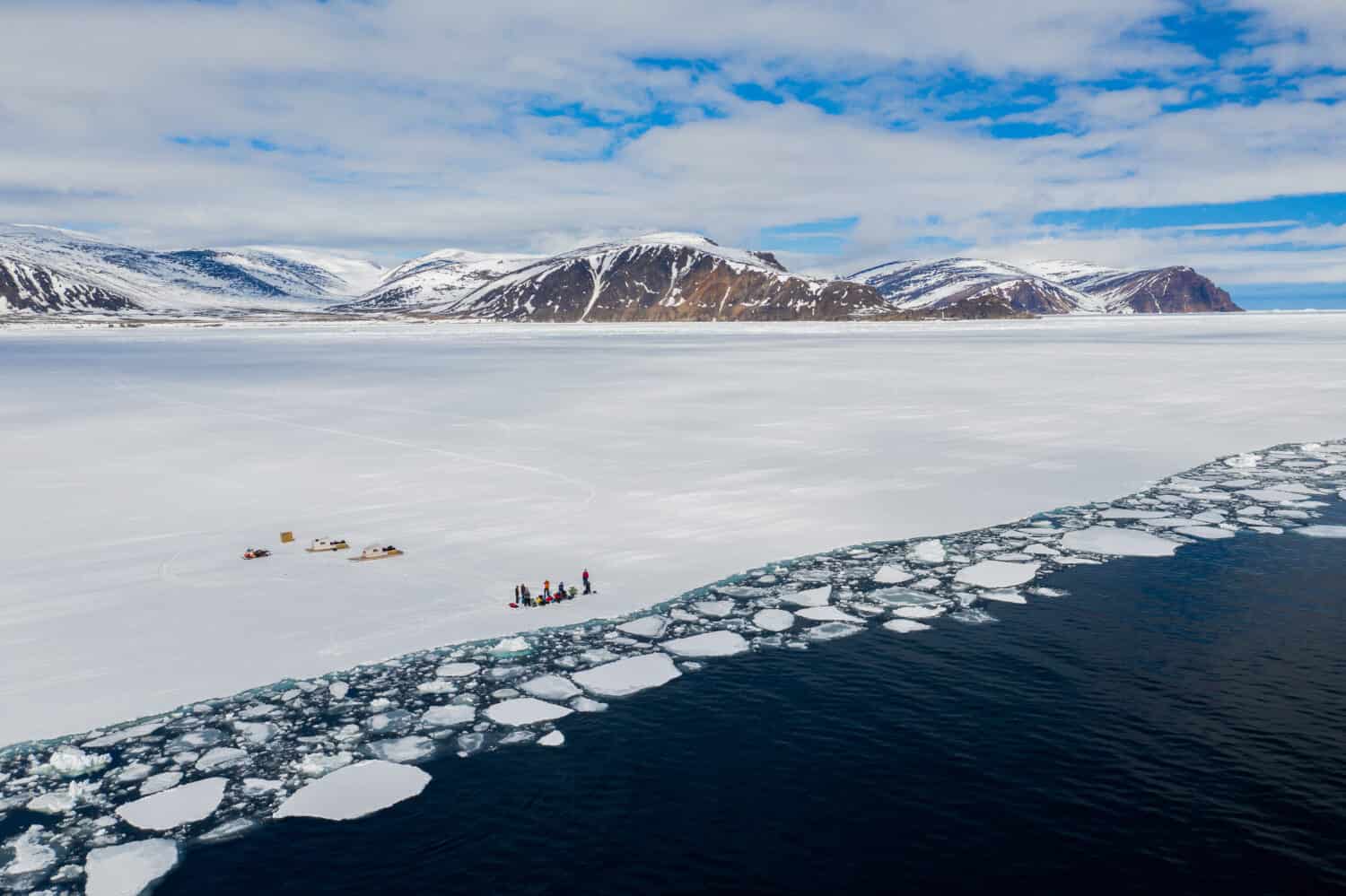The largest country in North America, Canada is a massive place despite its sparse population. Canada is 2,879 miles tall, from the northernmost point in Cape Columbia in Nunavit to the southernmost point in Middle Island in Ontario, and boasts a whopping 3,855,102-square-mile land mass.

Canada’s flag is recognizable by its maple leaf – a popular symbol of Canadian identity.
©iStock.com/RM80
Becoming Part of North America
Canada was home to many indigenous people before colonizers from Europe came here to settle. The name “Canada” comes from the Huron-Iroquois word “kanata,” which means village. Two indigenous people in 1535 told Jacques Cartier about the route to the village of Stadacona, now modern-day Québec. He heard the word “kanata,” and sure enough, the misheard name of the country stuck, becoming the Canada we know today.
Similar to how European colonizers settled in the USA, early explorers like Jacques Cartier and John Cabot thought that they had landed in the East Andes, calling the original inhabitants of the land Indians. On July 1, 1867, the Canadian Confederation saw the establishment of the Dominion of Canada, which New Brunswick, Nova Scotia, and the Province of Canada together formed. Over the course of the next century and a half, Canada would grow into the massive country it is today. Now, it comprises ten provinces and three territories.
Canada became completely independent in 1982, when Queen Elizabeth II repatriated the Canadian constitution. At that point, it no longer needed review or approval from the British Parliament. Now, Canada is its own country, while still recognizing the King of the United Kingdom.
Geography of Canada
Canada is an enormous land mass – it’s the second largest country in the world, behind Russia. It boasts a 3,855,102-square-mile land mass, 52,455 islands, and has a 5,524-mile border that it shares with the United States, making it the longest international border in the world.
The largest country in North America is extremely diverse in its geographical makeup. It contains forests, tundras, mountain ranges, lakes, coastal areas, and more.
The boreal forest of Canada is the largest group of forests in the world, stretching 1.2 billion acres across the northern part of the country. The boreal forest is extremely important – it’s home to countless indigenous communities, it stores upwards of 40 percent of the land-based carbon found in the world, and it is home to an incredible amount of Canadian wildlife.

Canada’s Arctic Tundra is home to many different kinds of wildlife, despite its subzero temperatures and barren landscapes.
©CherylRamalho/Shutterstock.com
Another significant environment found in Canada is the Canadian High Arctic Tundra. That’s an extremely cold, dry place. It’s also home to many different animals, like polar bears, Arctic foxes, Arctic hares, and an endangered caribou subspecies known as the Peary caribou.
Canada also claims many different mountain ranges. Those include part of the Rocky Mountains in western Canada, extending from the United States, as well as the southwestern St. Elias Mountains and the Laurentian Mountains, located in eastern Canada.
Overall Size of Canada
Canada is the largest country in North America and the second largest country in the world. It is 2,879 miles tall and 3,426 miles wide, making it much larger than its southern neighbor. It has 151,019 miles of coastline, the longest in the world. Further, it shares a southern border with the United States that stretches 5,524 miles, the longest international border in the world.
Despite its enormous size, the Great White North has a sparse population, with 38.3 million people calling it home. The USA’s ten largest cities make up about 26.5 million people in comparison. Canada’s largest city is Toronto, containing 2.8 million people.
Canada in Comparison to Other Countries
Canada is the second largest country in the world, coming in behind Russia. Russia has a 6.6-million-square-mile area, and Canada has a 3.9-million-square-mile area. Coming in just behind Canada is China, with a 3.7-million-square-mile area.
Despite its size, Canada does not come close to other countries in terms of population. It is 38th in the world for largest population. India, China, and the United States dominate the top three spots, respectively.
Wildlife of Canada
The Rangifer tarandus pearyi, or Peary caribou, is an endangered Arctic species that resides in the High Arctic Tundra. This subspecies of caribou is different from most others. Both male and female Peary caribou grow antlers. Both also grow a thick, white fur in the winter called velvet that turns into a shorter, darker fur by the time summer comes around.

Peary caribou are identifiable by their antlers, but also their thick white fur.
©Paul Loewen/Shutterstock.com
Beavers are also significant in Canada – the Castor canadensis is the largest rodent in North America. Nicknamed as ‘nature’s engineers,’ the beaver is known for its powerful jaws that help it create its home in freshwater environments.
Polar bears are also found in Canada, claiming about two-thirds of the world’s polar bear population. Most Ursus maritimus (which means ‘sea bear’) are commonly found in the more reserved, northern Arctic parts of Canada, where their thick fur allows them to hunt and swim in the subzero temperatures.
Final Thoughts
While it’s not the largest country in the world, Canada is remarkably diverse with the incredible amount of land mass it has. From beautiful mountain ranges to freezing tundras, from bustling cities to forest wilderness, Canada has a lot of beauty to offer!
Thank you for reading! Have some feedback for us? Contact the AZ Animals editorial team.








